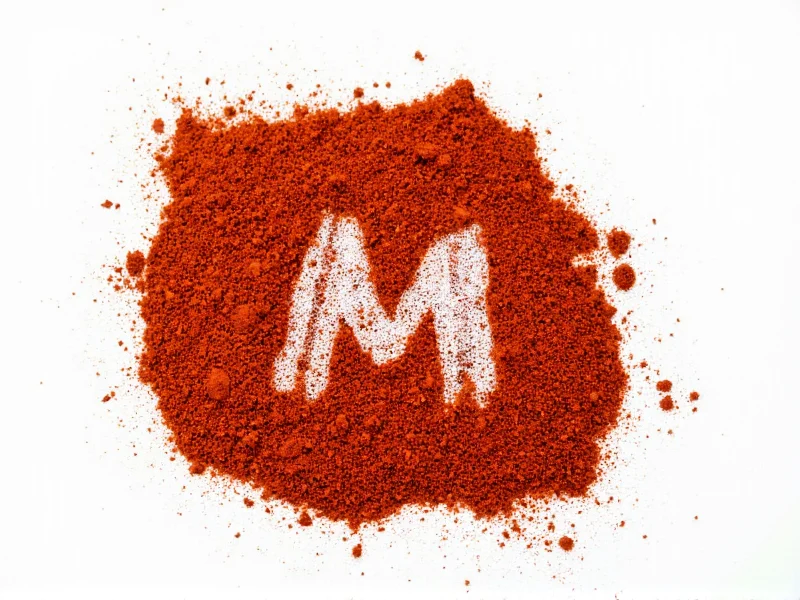When searching for a spice that starts with m, mace stands out as the definitive answer. This distinctive spice originates from the Myristica fragrans tree, the same plant that produces nutmeg. While nutmeg comes from the seed itself, mace is carefully harvested from the lacy red aril that surrounds the seed.
What Exactly Is Mace Spice?
Mace, scientifically known as Myristica fragrans aril, appears as delicate orange-red strands that flatten into blade-like pieces when dried. These "blades" range from 1-3 inches long and transform to a pale yellow-orange when dried. Unlike many spices that start with m, mace has a more delicate flavor than its counterpart nutmeg, with citrusy notes and subtle pepper undertones.
| Characteristic | Mace | Nutmeg |
|---|---|---|
| Source | Outer coating (aril) of nutmeg seed | The seed itself |
| Appearance | Thin, orange-red blades | Brown, oval seed |
| Flavor Profile | More delicate, citrus notes, subtle pepper | Stronger, warmer, more intense |
| Intensity | Milder (use 1.5x more than nutmeg) | Stronger (use less) |
| Common Uses | Light-colored sauces, baked goods, delicate dishes | Heartier dishes, meat rubs, stronger flavors |
The Historical Journey of Mace
Historically, mace spice that starts with m was even more valuable than nutmeg during the spice trade era. Dutch traders controlled the Banda Islands (the only source of mace at the time) and deliberately destroyed excess crops to maintain high prices. This "spice that begins with m" became a status symbol in European royal courts, often used to flavor expensive dishes and preserve meats.
Culinary Applications of Mace
Professional chefs seeking the perfect m spice for recipes appreciate mace's versatility. It works exceptionally well in:
- Light-colored sauces and soups where nutmeg might discolor the dish
- Baked goods like pumpkin pie, gingerbread, and spice cakes
- Meat marinades, particularly for poultry and pork
- Indian garam masala and Middle Eastern baharat spice blends
- Custards and creamy desserts where its subtle flavor shines
When substituting mace for nutmeg in recipes, use about 1.5 times more mace since it has a milder flavor profile. For those exploring spices starting with m, this ratio adjustment prevents under-seasoning dishes.
Proper Storage Techniques
To maintain freshness of your m spice used in cooking, store mace blades in an airtight container away from light and heat. Whole mace retains flavor longer than ground—up to 2 years compared to 6-12 months for ground. For optimal flavor in your m spice for baking applications, grind blades just before use with a microplane or spice grinder.
Health Considerations
Like other spices starting with m, mace offers potential health benefits when consumed in culinary amounts. It contains myristicin, which may support cognitive function, and has traditionally been used to aid digestion. However, excessive consumption (beyond typical culinary use) can cause adverse effects. Those seeking m spice health benefits should stick to standard recipe measurements rather than consuming it medicinally without professional guidance.
Global Variations of Mace
Different regions utilize this spice that starts with m in distinctive ways:
- In Indonesian cuisine, mace features prominently in rendang and other slow-cooked dishes
- British cuisine uses it in traditional meat pies and pickling spices
- Caribbean cooking incorporates mace into jerk seasoning blends
- German baking relies on mace for certain Christmas cookies and stollen
For home cooks exploring the m spice list, understanding these regional applications helps create authentic dishes from various culinary traditions.
Where to Find Quality Mace
When shopping for this m spice for cooking, look for:
- Bright orange-red blades (dull color indicates age)
- Flexible blades that don't crumble when bent
- Whole blades rather than pre-ground when possible
- Reputable spice merchants who specify origin (Grenada and Indonesia produce the highest quality)
For those compiling a comprehensive m spice list, note that mace comes in different grades based on color and origin, with pale orange "Holland" grade and deeper orange "Banda" grade being the most common.











 浙公网安备
33010002000092号
浙公网安备
33010002000092号 浙B2-20120091-4
浙B2-20120091-4